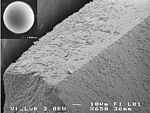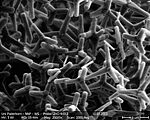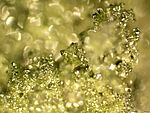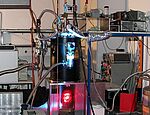Research & Facilities
Hybrid materials are materials prepared by combining organic and inorganic materials designed on the micro or nano scale. The combination of such materials leads to new exciting functionality and effects with highly tailorable properties. For the fabrication of inorganic materials we use sol-gel-based processes. Our focus is currently on wide-band-gap semiconductors, such as silicon carbide (SiC), titanium dioxide (TiO2) or zinc oxide (ZnO) which are very promising materials for numerous photonic applications. Various growth conditions lead to nano or micro crystals and fibers. Above all also porous and bulk semiconductors are grown.
The development of new materials needs a deep understanding of the materials properties. Thus various kinds of spectroscopy are needed. Among common optical spectroscopy, our field of expertise is magnetic resonance spectroscopy with various techniques such as optically or electrically detected multiple resonance spectroscopy, allow the determination of the microscopic structure and chemical nature of defects in materials. The knowledge of defects in materials is important for a detailed understanding of electrical and optical properties of materials and thus allows the application of such defects for device application.
Photonic Crystals

Metamaterials

Sol-gel-based semiconductors …

Magnetic Resonance Spectroscopy…

Gruppenleitung

